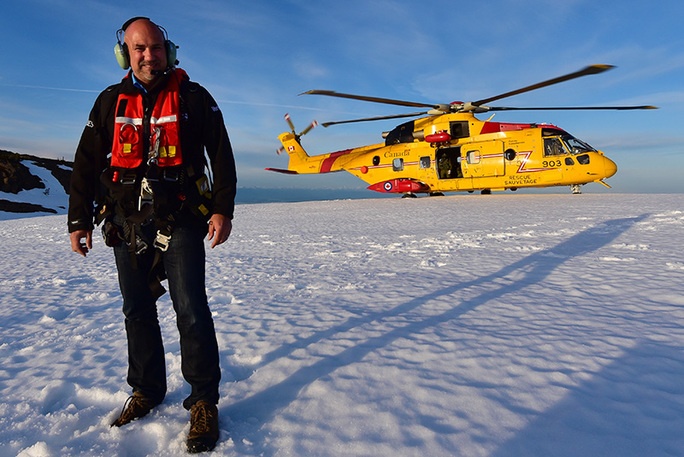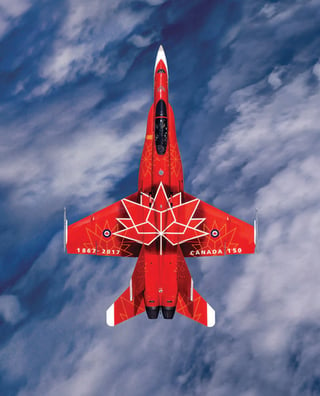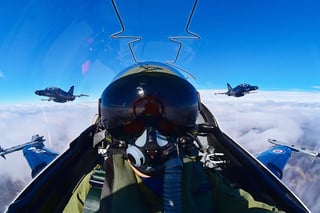
As part of our September focus on photography, BDN Partner Kyle Davis recently had the pleasure of speaking with Mike Reyno, group publisher of Vertical, Vertical 911, Skies, Insight, and RCAF Today magazines about the art and science of aviation photography. Mike is an accomplished photographer who has been involved in the aviation publishing industry since the early ‘90s.
His experience and in-depth knowledge of aviation is the foundation that MHM Publishing’s successful portfolio of magazines has been built upon. Mike has flown in over 80 aircraft types, and has accumulated over 1,000 hours photographing aircraft air-to-air. This is part one of a two-interview series; part two will follow here on Sept. 19. Note: all photos courtesy of Mike Reyno.
You’ve always been passionate about aviation and about great aviation photography. Can you tell us a little bit about how that started?MR: I grew up in London, Ontario — about an hour and a half west of Toronto. I first got connected to aviation as a kid going to the London International Air Show. Every year, I noticed there was a group of guys taking photos. So, that was kind of where it all started. When I was about 14 I started taking pictures, too, and my interest in aviation and then photography grew and intensified. And it’s funny, because I always tell my dad, “you never took me skating and you never got me in to sports,” and he laughs and says, “but I took you to a bloody air show.” I would go to these shows and shoot 25-30 rolls of film, and it wasn’t long before I wanted to take everything to the next level. I was interested in photography as a career and started to notice that all of the photographers at these shows had other full-time jobs. They were police officers and sales reps — you name it — but photography was something they did as a sideline. Well, I wanted to make it in to a full-time gig because I loved it. I basically looked at everything that the other photographers were doing and said I won’t do any of that. So I just started shooting and building up my own reputation. I had a little print portfolio in my camera bag and I’d show it to people along the way. My very first air-to air-photo shoot was in a Sea King helicopter and I took those photos to the guys who flew the jets and they invited me to fly with them, and from there it started to build and I began to really separate myself from all the other photographers.
Were you making money?
MR: I started to make money around that time, and I started to build a good reputation for myself within the Canadian Air Force community because that’s where it really all started for me and things kind of took off from there.
What advice you would give to aspiring photographers today?
MR: My advice to the new generation of photographers is that you have to ignore everything around you. It’s a very clique type of group with a lot of naysayers and critics and you can’t be afraid to do things your own way. You need to have confidence in yourself and your vision for what you want to do and don’t pay attention what anyone else says or does. That’s what I did in the beginning and those are the guys I see doing phenomenal work today.
Are you self-taught?
MR: When I started I was just taking photos for fun. I never took a photography course, and I just learned by doing. I still have my first camera from my brother. He reminds me of that all the time.
What made your photos stand out initially?
MR: I think understanding the aircraft and what it can do to get the shot, as well as the people behind the aircraft is important. But most of all, the photo has to tell a story without having to read a caption. And I think that’s the key and a lot of people are still missing that, but I think that was the difference early on. 
There are a lot of aspiring aviation photographers out there. I would guess it might even be harder today than it was when you were coming up?
MR: Well, I have mixed feelings on that because the difference today is that we have digital. So, with digital you can see the shot instantly. And it’s funny, if you go to an air show and watch 30 photographers, within one second of a plane going by they’re all looking down at their cameras to make sure they got the photo. In my early days we didn’t have that luxury. So in some ways it’s easier now because of the technology. You can take a shot that’s marginal and you can make it look a lot better, and I'm not knocking that because I like seeing how people can take a photo to the next level — but there’s a limit to that because at some point the photo itself gets lost.
Who is doing work today that you admire?
MR: There is a new generation of phenomenal photographers who are taking it to the next level — I’m talking about young guys like Anthony Pecchi. He came in to a crowded space and established himself, very, very quickly because he’s different and he has a great personality to go along with his talent. That gets him the access. There are other guys like Jan Jasinski, a Canadian who doesn’t do air-to-air, but does a lot of work at the end of the runway. He does very creative things with his images. He just kind of gives it a little push, but he still maintains the essence of the photo. Another great young photographer is Stuart Sanders. He shoots fighters from the ground and it looks like an air-to-air shoot. He’ll take a photo of a fighter flying by at 400 knots and get a tack sharp image — that’s very difficult. These are guys that are truly creative. On the other hand, you can go to airliners.net and see that probably 80-plus percent of the images are basically the same. And it’s that 20 percent that I'm always looking for.
What are your thoughts on the technical and the artistic aspects of great photography and what advice can you offer?
MR: It can be difficult to have the two blend together and do justice to both aspects. But let’s say you’re a contract photographer who gets assigned to go shoot a K-MAX helicopter. What do I know about a K-MAX? What are its capabilities? What are its selling features? What types of photos can I take to really show off what that aircraft can do? The photographer has to connect the dots. For some photographers — and I'm saying more on the enthusiast side than on the professional side — you’ve got to get past the wow factor of hey, I'm flying in an airplane shooting photos and there’s another one flying right beside me. As a photographer, you have to know what you want from the shoot and then push the limits to make it happen, and when I say push, I don’t mean from a safety perspective, but to have the confidence to speak with the pilots or whoever. I want to see photographers stand up to orchestrate the photo shoot so they can get that image that’s different versus just shooting whatever is in front of them.
one flying right beside me. As a photographer, you have to know what you want from the shoot and then push the limits to make it happen, and when I say push, I don’t mean from a safety perspective, but to have the confidence to speak with the pilots or whoever. I want to see photographers stand up to orchestrate the photo shoot so they can get that image that’s different versus just shooting whatever is in front of them.
I'm hearing a common theme about confidence.
MR: Yes. But there are also three fundamentals. So you’ve got the passionate or artistic side, you’ve got the technical side of photography, but then you also have the technical side from what will these aircraft do. So imagine I’m photographing an F-18 that likes to fly at 350 knots from an airplane that likes to fly at 250 knots. How can I orchestrate this so we’re going to be safe? You’ve got different performance envelopes so you have to have that understanding as well as knowing not to ask a helicopter to hover into or out of wind, for example. You need to know what the aircraft is capable of and what the pilots are capable of. 
People always ask photographers what kind of equipment they use – is that a question you get a lot?
MR: Definitely. And it’s interesting because for a lot of photographers it’s their secret recipe. You know, what lens did you use? What camera did you use? I'm a Nikon guy. I was a Canon guy, but probably about six years ago I switched, and that’s because Nikon at that time had the edge on low light capability. Now they’re pretty much like Ford to GM, and they both have their pluses and minuses. For me I'm just so invested in Nikon now that I wouldn’t go back. And I have four lenses that are my go-tos: Nikkor 14-24mm F/2.8, Nikkor 70-200mm f/2.8, Nikkor 80-400mm F/4.5-5.6 and Nikkor 18-200mm f/3.5-5.6. I have eight more, but those four are the mainstays.
Coming Up: Don’t miss next week’s interview as Mike talks candidly about his most memorable (and frightening) air-to-air photo shoot, the value of great photography, and much more! Also, if you liked this interview, you may also be interested in this blog, "Photography Tips for Aviation Photographers” and this all-new “
 ,” available for download now.
,” available for download now.
